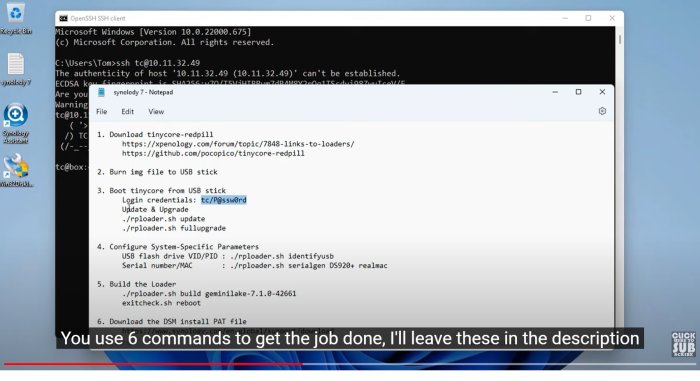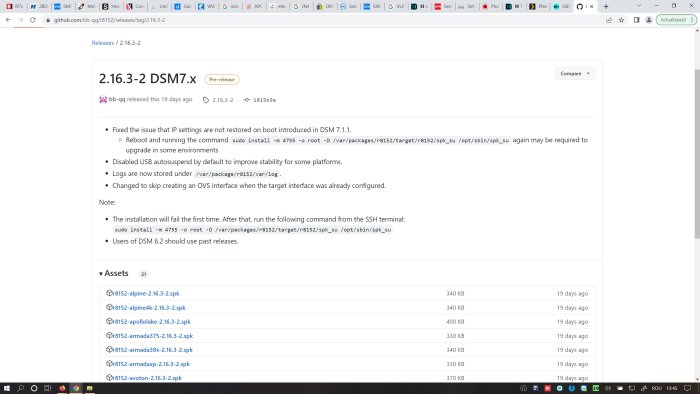Hello everyone,
Tonight I will try to tell as briefly as possible my experience in using xpenology.
I hope that those who will read will be helped in building a NAS with multiple capacities.
My whole story started at the beginning of this year when I wanted to build a NAS to be able to use it with plex (hw transcoding).
I specify that I have been using a synology NAS for over 4 years, so I was somewhat familiar with the operating system and related applications, but not having the capability of a plex with hw transcoding (DS418play), so as a result I purchased a case from fractal design and ROG Z370-i with i7-8700 and started assembling it.After this, without studying a lot and with a lot of luck, I decided to build the 918+ version with june loader 1.04b.At that moment I didn't know exactly what infrastructure I needed for the 918+ version to work, but to my luck and surprise, in a maximum of 2 hours I had installed the first version of xpenology (6.2.2) after which I successfully managed to upgrade to 6.2. 3_25426.This time I started studying because I had added an NVME SSD directly to the port on the motherboard and I wanted to use it as cache memory.In the end I found a script that I launched and after restarting I managed to see the SSD and set it accordingly. After some time I discovered that it doesn't help me much in the hw transcoding process, but I managed to set something on this new NAS .The next step was to figure out how to make hw transcoding work. Until this step, I ran into another big problem. Without using hw transcoding, the CPU health quickly rose to over 80-90% and its temperature quickly rose to 70 -80 C and with the stock cooler obviously it failed to cool it down and obviously it stops as soon as the temperature rises above 85-90 C.After a few days of study and being somewhat constrained by the limited space in the case, I decided not to purchase a cooler from noctua and finally purchased a liquid cooler from Corsair (icue H115 PRO). After installing it, relatively easy ( I had not installed such a cooler until then) and its setting in the bios, the processor's situation changed dramatically for the better. With a processor usage of over 80%, its temperature no longer exceeded 70-75C at the most, after which it dropped suddenly below 50C.The only big disadvantage is that the radiator was mounted on the side of the case and blocks the use of the PCI-E 16x slot. But at that time I wasn't thinking of using it in any way, so I didn't see any problem in this regard. Considering that I couldn't control the speed of the 2 12 cm fans, I decided to replace them with 2 Noctua fans mounted on the radiator inside with the absorption function and with the speed reducers that came with the package. Thus they became extremely silent even if they were working permanently.With this problem solved, I returned to the search for how to activate hw transcoding.After a few more weeks of study,I understood, or at least I hope I understood, that the whole part of HW transcoding could be activated by changing drivers.Consequently I downloaded the new drivers (extra918plus_v.0.13.8) and I replaced both .izma files on the second partition of the boot stick easily. Previously I emptied the / modules / update / directory with the command rm -rf / usr / lib / modules / update / *. After the restart I noticed that I can use HW transcoding and the processor was used with a maximum of 35%.In the meantime, DSM 7 also appeared, which I installed on the Synology NAS and which had several applications superior to those in version DSM 6.2.3. The Photos application is much more interesting and brings together the 2 applications from version DSM 6.2.3. I also use this application a lot for personal photos and videos.Although I managed to activate my hw transcoding, plex was buffering every 20-30 seconds. In the end I discovered that this happens because the tone mapping was done with the help of the processor and the transcoding was done by hw, or so I understood .Finally, in order to have a correct transcoding, I moved plex to docker and this buffering was also solved.Now I come back to the present, when I got the courage to try to upgrade to DSM 7.1.1.
I did a thorough study again and decided to try this upgrade, already knowing the advantages of DSM 7 on the Synology NAS. I specify that DSM 6.2.3 was very stable during the few months it was used for plex and the periodic back-up of the other one.In the first phase I decided to stay with 3 old HDDs for tests. I DO NOT RECOMMEND this, because I had to forcefully turn it off several times and one of the HDDs failed. At least it had 3 years of continuous use :)).After I realized that I could create problems for the HDDs, I found a 500G Samsung 850 SSD around the house, which I mounted and continued the tests.I downloaded tinycore-redpill v0.9.2.9 and wrote it to the stick using Win32DiskImager.I have attached a picture with the steps to follow to create the bootloader. I also found these steps on YouTube.I use to build DS918p-7.1.1-42962 an after that the NAS restarted and I was able to find it with the direct IP (I knew which IP I had assigned from the MAC router to the network card of the NAS) and I was able to connect to it and installed DSM_918+_42962.pat .In this way I managed relatively simply to install the DSM 7.1.1 version. Considering that I have only one gigabit network card on the motherboard, I decided after a little study to install a USB 2.5 GBit network card (Club 3D).With realtek drivers that I found at github.com. I have attached the driver package as well as the script that you have to launch after the first error.ATTENTION that after restarting, the driver package must be launched again with "RUN" otherwise the external card will not work.ATTENTION that after restarting, the driver package must be launched again with "RUN" otherwise the external card will not work. So the NAS will have to be accessed after restart also on the old network card. This driver package can be found among the installed applications .The second network card of the same type is already on the way to be able to use it together with the other one (Bond).
Tomorrow I'll be back with some information and advice (if I'm allowed) for those who want to try what I presented above
r8152-apollolake-2.16.3-2.spk


